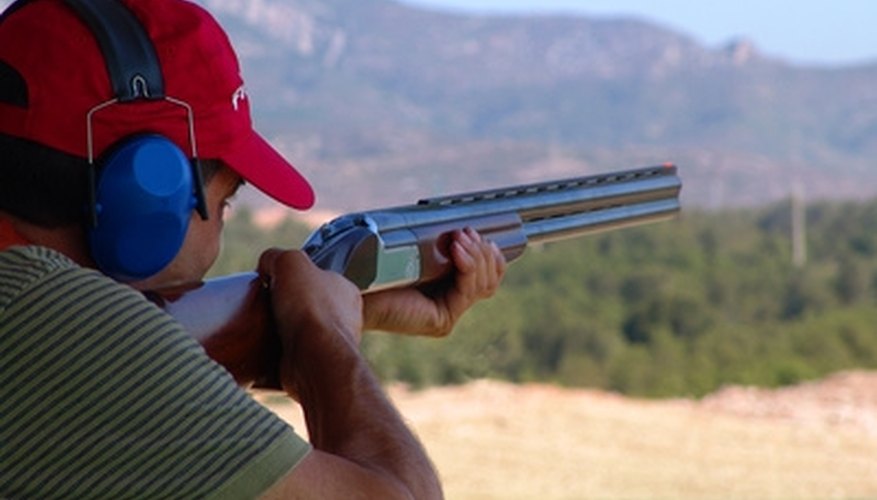
It is important to educate yourself on the varying recoil effects of a .357 Magnum and a .44 Magnum prior to using them. Firing a .44 Magnum without having experienced the recoil of a .357 Magnum may result in injury.
History of the .357 Magnum
The .357 Magnum was chiefly designed by Elmer Keith and introduced by Smith & Wesson in 1936. The .357 cartridge was designed to produce remote wounding effects in living targets.
History of the .44 Magnum
Developed in the 1950s by Elmer Keith, the .44 Magnum improved upon the power of the .357 Magnum. Compared to the .357, the .44 was loaded to a higher pressure, which increased its velocity.
What is Recoil?

tiro deportivo image by RAMON CAMI from Fotolia.com
The recoil effect pushes a gun backward, due to the pressure of a bullet being discharged.
.357 Recoil
Although fairly powerful, the recoil of a .357 Magnum is manageable for an experienced shooter due to the cartridge being lighter than a .44 Magnum.
.44 Recoil
The .44 Magnum has higher recoil action than the .357 due to the heavier cartridge weight and the increased diameter of the barrel. Factors such as hand strength and stance also can affect the recoil.
Verdict
You should not attempt to fire a .44 Magnum without having mastered the .357 Magnum. Failing to do so can result in breaking your hand, wrist or other bodily harm.
References
Writer Bio
Anthony Faccenda has been writing entertainment-related articles since 2009. He has written concert reviews for "The Noise Boston" and press reviews for "Revitalize the Scene." Faccenda holds a Bachelor of Arts degree in history from Rhode Island College. He is a member of the National Honors Society for history.



